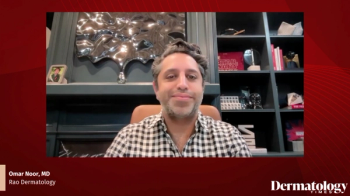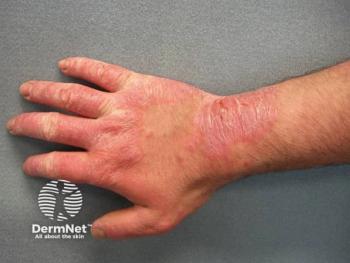
Reviewing Hemangiomas and Capillary Malformations and their Associated Risks
Key Takeaways
- Early treatment of hemangiomas is crucial due to rapid growth in infancy, with propranolol and timolol as effective treatments.
- Ultrasound may inaccurately diagnose lesions as hemangiomas, necessitating careful clinical evaluation.
At Elevate-Derm Summer, Jim Treat, MD, outlined diagnostic limitations of imaging and the importance of recognizing capillary malformation patterns linked to other diseases.
“There are new clinical guidelines for hemangiomas. The bottom line is, get them into treatment as soon as possible....The reason for that is because we have this very short window to treat because we know hemangiomas grow so rapidly in the first part of life,” said Jim Treat, MD, at the
Treat, a board-certified dermatologist and professor of clinical pediatric and dermatology at the Dermatology Section at Children’s Hospital of Philadelphia in Pennsylvania, presented “Hemangiomas and Vascular Anomalies” at the 4-day NP/PA conference.1
Treat opened his session by addressing diagnostic tools for hemangiomas, which, in the case of ultrasounds, are not always the most specific.
While showing a slide of various infantile lesions, Treat said, “These are not all hemangiomas, but if you ultrasound all of them, they will all be called hemangiomas. So, although ultrasound is not a terrible technique, it is a jaded technique. When the radiologist focuses on them, it’s like they only have a hammer and everything’s a nail. They call everything a hemangioma, and most of them are not hemangiomas,” Treat stated.
Then, Treated moved on to discussing the management of infantile hemangiomas and the most important factors for clinicians to consider. First, most infantile hemangiomas demonstrate growth within the first 3 to 4 months and are not fully formed at birth. If a clinician spots one, it’s best to refer the pediatric patient early on to a hemangioma specialist, ideally in the patient’s first month.2
Overall, propranolol and timolol are the most effective treatments for patients older than 5 weeks of age. Treat often prescribes topical timolol 0.5%. Although, he reminded attendees that timolol is an eye drop, and many parents may be confused. He instructs parents to apply one drop of timolol 0.5% to the hemangioma twice a day. He also cautioned that timolol is 10 times more potent than propranolol, and therefore, it should not be used on mucous membranes.
Associated Risks
Although not all infantile hemangiomas are cause for worry, most risk is associated with their location on the patient. For example, beard distribution may be a sign of airway involvement. Nasal tip involvement may cause permanent disfigurement. Periocular locations may impact vision. Importantly, lumbosacral locations may be associated with spinal cord anomalies. Treat noted that lumbosacral hemangiomas are highly associated with a tethered spinal cord.
When looking at infantile hemangiomas, distinguishing patterns may help predict additional risks. Segmental hemangiomas, which grow in an embryologic pattern, are more often associated with underlying abnormalities and hemangioma syndromes. Localized hemangiomas are round or oval and clearly demarcated, and are not typically associated with an abnormality.
Capillary Malformations
Next, Treat reviewed various types of capillary malformations and their associated syndromes.
Nevus simplex: Rarely associated with a concerning syndrome; almost every child has these. However, in rare cases, these are associated with Beckwidth-Wiedmeman.
Port-wine stain: If located on the forehead or upper eyelid, there is a risk for Sturge-Weber. Treat also recommends referring the patient to ophthalmology for imaging.
Reticulated port-wine stain: In some children, this can be associated with a PiK3CA-related overgrowth.
Geometric capillary malformations: Associated with underlying venolymphatic malformations such as Klippel-Trenaunay.
Oval (thumb-print) capillary malformations: Associated with arteriovenous malformation syndrome. Treat noted that clinicians may save a life if they spot these.
“Big picture things to take away from this talk are that hemangiomas are not present at birth as fully formed lesions. If you have a fully formed lesion, it’s likely something else, and you want to think about what it could be. Then, genetics is really key to vascular anomalies,” Treat said. “Genetics has become a huge part of what we do in pediatric medicine all the time.
References
- Treat J. Navigating pediatric vascular anomalies: diagnosis & treatment insights. Presented at: 2025 Elevate-Derm Summer Conference; July 24-27, 2025; Park City, UT.
- Krowchuk DP, Frieden IJ, Mancini AJ, et al. Subcommittee on the management of infantile hemangiomas. clinical practice guideline for the management of infantile hemangiomas. Pediatrics. 2019 Jan;143(1):e20183475. doi: 10.1542/peds.2018-3475
Newsletter
Like what you’re reading? Subscribe to Dermatology Times for weekly updates on therapies, innovations, and real-world practice tips.



















